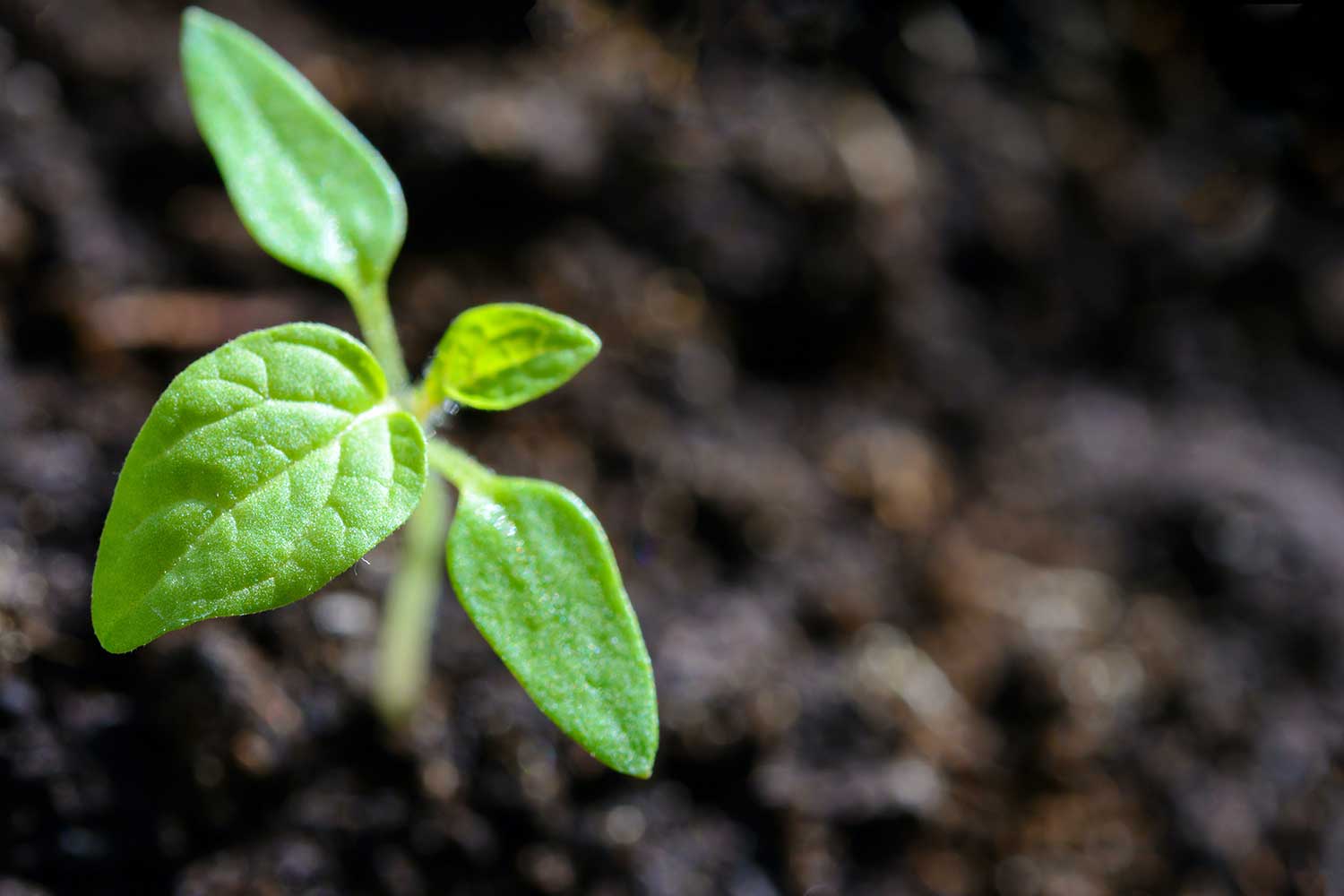The
Key 2
Soil Health and Fertility
Made in Australia from 100% Australian Contents
The Key 2 Optimum Nutrition & Health for all Life on Earth
It is our privilege to introduce a world first product created by Nature that contains every organic nutrient, vitamin and mineral required to give and sustain the life and fertility of soil.
Key 2 Ag is a whole product with high organic carbon content that stimulates biological activity in soils and is the only natural wetting agent (water sponge) presently known.
These elements are vital to produce optimum nutrition and yield in all vegetation and plants which in turn provide optimum nutrition to the immune and health system of animals and humans.
A World First
Key 2 Ag is the first completely natural product that performs equal to, or better than, artificial fertilisers in terms of yield, performance and price. However, it produces crops with far higher nutritional content than is possible with artificial fertilisers. Key 2 Ag is what our entire planet grew from originally, before mankind existed.
Key 2 Ag also remediates contaminated land/soil, replenishes soil fertility, stimulates biological activity in soils and is a natural wetting agent. It is a whole product with high organic carbon content that contains every organic nutrient, vitamin and mineral required to give and sustain the life and fertility of soil. All these elements are vital to produce optimum yield and nutrition in all plants and vegetation which in turn also provides optimum nutrition to the immune and health system of animals and humans.
What is this Product Created by Nature?
It is called lignite which is formed from peat deposits over many thousands of years during which time natural chemical reactions occur and moisture is squeezed out of the peat.
Key 2 Ag is the product of subjecting lignite to a mechanical process that liberates the humic contents so that all of their precious, life-giving nutrients yield immediately when they are added to soil.
The result is a world first product that out-performs any artificial/chemical fertiliser by itself. However, when used in conjunction with artificial/chemical fertilisers it increases their efficiency.
Why does the natural material need to be processed?
During the formation of humus/humic substances they become strongly bound to the carbon skeleton (substrate) in which they were created by the formation of a long-chain molecular structure. A consequence of these symbiotic reactions is that the valuable contents of these materials, known as humic substances, become locked in the substrate and are then only released slowly by Nature over hundreds of years. Accordingly the amount of humic substances immediately available from mined, raw lignite is less than 1% under good conditions.
The Key to unlocking the humic substance content so that it becomes immediately available is in the proprietary process developed by the Key 2 Group. When lignite is subjected to this process the full compliment of dormant humic substances is liberated and become immediately bioavailable. This is the secret of Key 2 Ag.
What is the Process?
The process utilises patented apparatus and proprietary know-how to alter the long-chain molecular structure that binds humic substances to the carbon substrate. The function of the apparatus is described as ‘aeroacoustics’ (acoustic shock), which is a combination of air pressure, vacuum, aerodynamics and sound waves.
The process liberates moisture from the voids within the lignite substrate which in turn the apparatus converts to a unique atmosphere of oxygens and hydrogen. When lignite is subjected to such conditions its contents are liberated with no loss of efficacy.
The Science
Naturally occurring humic substances contained within lignites are superior fertiliser ingredients. These are by far the best source of humic substances for use as soil conditioners and for soil replenishment, however nature designed these life-giving sources to release slowly over hundreds of years.
This unique characteristic of slow-release of its content has frustrated scientists and agronomists for centuries. It is due to the long-chain molecular structure of humic substances being strongly bound to protein. Previously the only means of partly breaking these bonds was by using solutions of sodium hydroxide (NaOH) or potassium hydroxide (KOH). These are caustic chemicals that contaminate the contents during treatment. Crops treated and grown with caustic-extracted humic substances are banned from import into Europe, Japan, Australia and other large markets.
Key 2 Ag is the result of subjecting organic lignite to an ingenious process technology that liberates 100% of the dormant humic substances previously locked by long-chain molecular bonds to make them immediately bio-available. Accordingly Key 2 Ag is the richest natural source of organic humic substances presently known.
Beware of false claims
Unfortunately the marketing of humic substance extracts has caused much confusion in an unregulated market in which as many false claims have been made regarding their performance as have been made regarding their purity. Thus not all commercially marketed humic substances are equal in quality. It is very difficult for individuals purchasing a humate based fertiliser to tell the difference between a high quality humic substance and a low quality humic material, without laboratory tests. Accordingly the results from using these extracts have been as disappointing and ultimately as damaging as that of phosphate and nitrogen-based fertlisers. As has been repeatedly proven, extracts can never provide complete solutions.
Key 2 Ag contains no artificial chemicals, only nature’s natural chemistry is at work.
Try Key 2 Ag – Complimentary
The real test of any humic product is in the field. Growers interested in improving soil fertility and plant health need to set up field tests, with an open mind. In this regard we don’t ask anyone to buy the product based only upon the information contained herein, we invite you to work with us to achieve optimum results for your application. The Company will supply complimentary product for field and laboratory trials. Contact us for information at info@key2group.com
The Key 2 Soil Health,
Fertility and Productivity
Is the presence of completely available, naturally occurring humic substances. Plants grown with adequate humic substances are less subject to stress, are healthier, produce higher yields and the nutritional quality of harvested foods and feeds are far superior. Humic substances are known to produce beneficial physical, chemical and biological effects for the entire food-chain. The value of humic substances cannot be overstated, they are absolutely critical elements, without which optimum health in plants, animals and humans cannot be attained. These are the most precious of the earth’s life-giving nutrient sources.
The urgency to emphasize the importance of humic substances and their value as fertiliser ingredients has never been more important than it is today. By understanding how these carbon containing substances function, professionals will have a solid foundation on which to design environmentally acceptable and sustainable agriculture programs.
The Key 2 Nutrition
Nutrition is the Key to health, productivity and fertility for all species on our earth, not just humans. The seen and unseen can only thrive when they are nourished as Nature intended.
It is important to understand and accept that nutrition is about content, not appearance. It is unfortunate that large commercial interests have put great emphasis on appearance, storability and transportability, not on the nutritional content of fruits and vegetables. Crops are bred to produce higher yields, to be resistant to disease and to produce more visually attractive fruits and vegetables, however these features have little to do with vitamin or mineral content (nutritional quality).
The nutrient content of farmed foods is directly related to the nutrient content of the soil in which it is grown. It seems obvious that a plant cannot derive its nutrient content from any other source. The only way to prove these factors is by subjecting mature fruit from existing plots to a nutrient analysis and then comparing it to mature fruit grown from soil that has been treated with Key 2 Ag.

What are Humic Substances?
Humic substances are found in the soil’s humate layer, they are defined as: Organic Matter; Humus; Humate; Humic Acid; Fulvic Acid; and Humin. They are the components of humus, which are high molecular weight compounds that together form the brown to black hydrophilic, molecularly flexible, polyelectrolytes collectively called humus. They function to give the soil structure, porosity, water holding capacity, cation and anion exchange, and are involved in the chelation of mineral elements. The elemental analysis of humic substances reveals that they are primarily composed of carbon, oxygen, hydrogen, nitrogen and sulphur in complex carbon chains. Humic substances are recognised by most soil scientists and agronomists as the most important component of healthy, fertile plants, vegetation and soil.
Humic substances are the primary source of energy for beneficial soil organisms. Humic substances and non-humic (organic) compounds provide the energy and many of the mineral requirements for soil microorganisms and soil animals. Beneficial soil organisms lack the photo-synthetic apparatus to capture energy from the sun, thus must survive on residual carbon-containing substances on or in the soil. Energy stored within the carbon bonds function to provide energy for various metabolic reactions within these organisms. Beneficial soil organisms (algae, yeast, bacteria, fungi, nematodes, mycorrhizae, and small animals) perform many beneficial functions that influence soil fertility and plant health.
Of most considerable value among humic substances is humic acid. It is a large, long-chain molecule that can be isolated in a relatively pure form. Current scientific studies show that the fertility and productivity of soil is directly related to its humic acid content. It determines the cation-exchange capacity (CEC), nutrient and oxygen content, and water holding capacity of the soil. Humic acids are unique in their ability to bind insoluble metal ions, oxides and hydroxides and to release them slowly and continually to plants as required. Because of the relatively small size of fulvic acid molecules they can readily enter plant roots, stems, and leaves. As they enter these plant parts they carry trace minerals from plant surfaces into plant tissues.
Higher humic content in soil translates to higher values of essential elements and accordingly higher productivity and nutritional content. It is the key to fertile, living soil.

Humus
Humus is defined as a brown to black complex variable of carbon containing compounds not recognised under a light microscope as possessing cellular organisation in the form of plant and animal bodies. Humus is separated from the non-humic substances such as carbohydrates (a major fraction of soil carbon), fats, waxes, alkanes, peptides, amino acids, proteins, lipids and organic acids by the fact that distinct chemical formulae can be written for these non-humic substances. Most small molecules of non-humic substances are rapidly degraded by microorganisms within the soil. In contrast soil humus is slow to decompose (degrade) under natural soil conditions. When in combination with soil minerals soil humus can persist in the soil for several hundred years. Humus is the major soil organic matter component, making up 65% to 75% of the total. A fertile soil should contain from 3-8% organic matter, however most commercial growing soils contain less than 1%.
Humus assumes an important role as a fertility component of all soils, far in excess of the percentage contribution it makes to the total soil mass. Humus functions to improve the soils’ water holding capacity. The most important function of humic substances within the soil is their ability to hold water. From a quantitative standpoint water is the most important substance derived by plants from the soil.

Wetting Agent/ Water Sponge
Because of the large surface area and internal electrical charges, humic substances function as water sponges. These sponge like substances have the ability to hold seven or more times their volume in water.
Water bridging is an important function of humic and fulvic acids. Water bridging by humic substances involves the attraction of a water molecule followed by the attraction of a mineral element cation (simply illustrated by COO-H2O-Fe+) at an anionic site on the humic or fulvic acid polymers. The water holding capacity of humic substances and their ability to bind trace mineral elements function together in water bridging. Water bridging is believed to improve the mobility of nutrient ions through the soil solution to the root. These mechanisms also help reduce leaching of plant nutrients into the subsoil. Recent experiments indicate that water bridging may be more common in humic substances than originally believed.

Sources of Humic Substances
Humic substances commonly occur within soils, waters, compost, peat, and in carbon-containing minerals such as brown coals, low grade lignites and leonardites. Most soils and waters on the earth surface contain some humic substances in the form of humin, humic acids or fulvic acids. However the concentration of humic substances in agricultural soils has reached seriously low levels.
Naturally occurring humic substances from low grade lignites (nature’s soil conditioners), are superior fertiliser ingredients, however nature designed these life-giving sources to release slowly over hundreds of years. This means that the amount of humic substances immediately bio-available from raw lignite is less than 1% under good conditions.
The Benefits of Humic Substances
The most important feature of humic substances lies in their ability to bind insoluble metal ions, oxides and hydroxides, and to release them slowly and continually to plants when required. Due to these properties, humic substances are known to provide numerous benefits, some of which are described below:
PHYSICAL BENEFITS
- Physically modify and improve the structure of the soil
- Nitrogen/ammonia is immediately sorbed by clay minerals or organic matter and is physically sorbed by the colloidal complex;
- Eliminates odour when applied to animal waste and converts it to rich soil components;
- Prevent high water and nutrient losses in light sandy soils and simultaneously convert them into fruitful soils by way of decomposition
- Increases water holding capacity of soil and thus help resist drought
- In heavy and compact soils, aeration of soil and water retention is improved; cultivation measures are facilitated
- Prevents soil cracking, surface water runoff and soil erosion by increasing the ability of colloids to combine
- Helps the soil to loosen and crumble and thus increase aeration of soil as well as soil workability
- Darkens the colour of the soil and thus helps absorption of the sun energy
BIOLOGICAL BENEFITS
- Stimulates plant growth
- Stimulates plant enzymes and increases their production
- Attracts and stimulates micro-organisms
- Stimulates growth and proliferation of desirable micro-organisms in soil
- Causes nitrifying microbes/bacteria to proliferate and convert compounds (nitrate, nitrite, ammonia) into plant and animal proteins;
- High carbon content mitigates high ammonia/nitrogen content in soils;
- Acts as an organic catalyst in many biological processes
- Stimulates root growth, especially vertically, and enables better uptake of nutrients
- Increases root respiration and root formation
- Promotes the development of chlorophyll, sugars and amino acids in plants and aids in photosynthesis
- Increases vitamin and mineral content of plants
- Thickens the cell walls in fruits which prolongs the storage and shelf time
- Increases germination and viability of seeds
- Stimulates plant growth (higher biomass production) by accelerating cell division, increasing the rate of development in root systems and increasing the yield of dry matter
- Improves the quality of yields
- Improves physical appearance and nutritional value
- Enhances plants’ natural resistance against disease and pests
CHEMICAL BENEFITS
- Chemically changes the fixation properties of the soil
- Neutralizes both acid and alkaline soils
- Regulates the pH-value of soils
- Improves and optimises the uptake of nutrients and water by plants
- Increases buffering properties of soil
- Acts as natural chelator for metal ions under alkaline conditions and promotes their uptake by the roots
- Rich in both organic and mineral substances essential to plant growth
- Retains water soluble inorganic fertilisers in the root zones and reduces their leaching
- Possesses extremely high cation-exchange capacity
- Effectively holds and converts nutrient elements (nitrogen, ammonia, phosphorus, potassium + iron, zinc, and other trace elements) into forms available to plants;
- Sorption of nitrogen/ammonia by chemically reactive sites within the humic matrix;
- Promotes the conversion of nutrient elements (nitrogen, phosphorus, potassium + iron, zinc and other trace elements) into forms available to plants
- Enhances the uptake of nitrogen by plants
- Reduces the reaction of phosphorus with calcium, iron, magnesium and aluminium and liberates it into a form that is available and beneficial to plants
- Increases the productivity of mineral fertilisers considerably
- Reduces the quantity of toxic substances in soils
- Liberates carbon dioxide from soil calcium carbonate and enables its use in photosynthesis
- Helps to eliminate chlorosis due to iron deficiency in plants
ECOLOGICAL BENEFITS
The ecological benefits of humic substances are diverse and represent profitable and effective solutions for environmental problems and the preservation of the environment.
- Soils with a high content of humic substances have low nitrate leaching and optimum nutrient efficiency, which is a prerequisite for “organic certification”
- Captures and holds nitrogen/ammonia by binding it to soil constituents such as organic matter and clays;
- Captures and converts nitrogen/ammonia when applied to animal waste, thereby eliminating odour;
- Reduces greenhouse gas emissions or captures and holds carbon in vegetation and soils;
- Promotes well-developed root systems and prevents nitrate and pesticides from mixing with ground water
- Humic acids reduce the salination problems created by the application of water-soluble mineral fertilisers. They have the ability to decrease high salt contents in soils and the resulting toxicities
- Reduces root burning from excessive salt concentrations in soils after fertilisation
- Reduces soil erosion by increasing the ability of soil colloids to combine and by enhancing root system and plant development
- Nourishes and promotes mycelium in the subsoil
HEALTH BENEFITS
- Humic acid has been scientifically proven to be a free radical scavenger. Free radicals are “broken” molecules that are off-balanced by having too many electrons on them which makes them dangerous to healthy, living cells. Free radicals can interfere with our DNA and the effect can be cancer-causing. Humic acid can bind them so they become harmless
- Humic acid is a potent chelator:- a molecule that binds metals, including toxic heavy metals. It is able to scavenge for heavy metals and eliminate them from the body
- It seems to increase the permeability of cell walls, allowing for easier transfer of nutrient metals.
- It can bind to essential metals and is believed to aid in their absorption in the body
- Impedes Herpes simplex virus infections, influenza viruses, including the swine flu
- Inhibits exotic viruses like the West Nile Virus, Haemorrhagic Fever and Coxsackie viruses
- Other studies indicate that its antiviral properties are broad spectrum, which means it would be effective against Asian and Bird influenza
- It is very beneficial for the immune system
- Scientific studies have shown that humic acid impairs the attachment of the HIV-1 virus, one of the viruses responsible for the development of AIDS
The Key 2 Liberating Humic Substances from Raw Materials

The dilemma of liberating humic substances from their bonds without any negative affect whatsoever has been resolved by the founders of Key 2 by developing a novel approach to a field of study known as “aeroacoustics”. They devised an apparatus that incorporates air pressure, vacuum, aerodynamics and sound waves to create unique atmospheric conditions that can have a physical effect on solid and fluid materials that are exposed to it.
Remarkably the process occurs without any physical contact between the apparatus and the introduced material. During the process moisture is released from the voids in the substrate of the raw material from which a high oxygen and hydrogen atmosphere is created to which the remaining organic compounds are exposed. This results in the liberation of all the contents of the raw material without causing any negative effect whatsoever. This process does not require artificial chemicals, catalysts or modification agents so the output remains organic.
Key 2 Ag is the result of subjecting organic lignite to this ingenious process technology that liberates 100% of the dormant humic substances previously locked by long-chain molecular bonds, to make them immediately bio-available. Accordingly Key 2 Ag is the richest natural source of organic humic substances presently known.
Product Features
Key 2 Ag
- Is not a fertiliser, it is a complete and natural soil replenishment mediator, bio-stimulant and wetting agent (water sponge) with a very high carbon content consisting of 100% organic, bio-available humic substances
- Is not an extract, it is a whole, natural product as Nature intended
- Is 100% pure (pathogen-free)
- Detoxifies soil – That is reparation/remediation of the soil, including complete degradation of pesticides, herbicides, chemicals and poisons
- Is a bio-stimulant that attracts to it all the biological life that works in collaboration to generate living, fertile, productive soil
- Creates the perfect environment for biological life to thrive – A living soil is a healthy, fertile soil!
- Supports proliferation of micorrhizae that aid plant roots in the uptake of water and trace elements
- Contains all the essential elements, minerals and vitamins required for optimum productivity in soil and vegetation
- Improves water-holding capacity – Key 2 Ag is a natural wetting agent (water sponge), it will hold up to 10 times its weight in water and not release it to the surrounding soil
- Restricts the activity of potential pathogens (like salmonella) from invading plants
- Reduces salinity in soils
- Stimulates root growth
- Increases uptake of mineral nutrients and vitamins
- Increases levels of chlorophyll
- Increases crop yields
- Extends production times (cycles)
- Widens planting and cropping windows
- Cost can be more than offset by reduced costs of fertiliser and pesticide ingredients
- Has no undesirable or negative effect whatsoever
Product Application Rates
Application rates vary greatly and are dependent upon the crop variety and the present condition of the soil.
When soil is brought back to peak condition the amount of product required as a maintenance rate will diminish over subsequent years thereby reducing costs on a year-on-year basis.
An indicative initial rate for reasonable quality agricultural soil could be from 150-250 kilograms per hectare.
An indicative initial rate for contaminated and/or poor quality soil could be from 300-500 kilograms per hectare.
In general an application rate equivalent to 2% of soil by volume is recommended with variance in accordance with soil condition.
The rate for horticulture application would be similar or less, again dependent upon the quality of the soil to be replenished. This would equate to 25 grams per square metre.
Specific recommendations cannot be made without assessing a recent soil analysis.
True Bio-remediation


The fact is that there is very little large-scale bio-remediation occurring in Australia and other countries throughout the world. The majority of what is termed “bio-remediation” consists of removing contaminated soil, dumping it at another location and replacing it with fresh soil from an uncontaminated area. Obviously this is not remediation of any kind, it is simply moving the problem from one place to another.
These practices have resulted in vast mountains of contaminated soil being stored within the metropolitan areas. The logic behind this ecologically harmful practice is to reduce the cost of transporting it further away.
Another of these practices is to bury or hide vast amounts of contaminated soil in locations approved by the governments and/or the Environmental Protection Agencies for this purpose. Although containment measures, for example, plastic liners and dam walls are implemented, it is only a matter of time before the contaminants make their way into the water tables and head towards the ocean via our rivers. Even in the early stages when the liners are in tact there are flood events that cause these dams to overflow causing contaminants to spill outside the containment area.
Most of these contaminants can be completely remediated by nature. Key 2 Bio is the natural solution.
The Key 2 True
Bio-remediation
Key 2 Group produces two organic bioremediation products with the same remediation capabilities, the only difference between them is that one is hydrophilic and the other is hydrophobic, so more efficient in water environments.
These products are highly effective for the capture, removal, clean up and/or remediation of most forms of pollution and toxic waste including hydrocarbon gases and oils, greenhouse gases, heavy metals, radionuclides and PCBs. After application, there is no need for further treatment or impounding. Contaminants are either broken down by natural degradation into plant food or into benign or beneficial organic compounds which may be put safely back into the ground, or remain in the ground as high-quality fertiliser, or they will be negated so as to cause no further contamination.
Key 2 Bio is produced as a powder that may be used as media in air filtration systems to absorb gas emissions, and can also be applied directly onto oil and toxic spills on land or water. It performs by sorption (absorption, adsorption) and ion exchange. The products also significantly stimulate biological activity.
When contaminants are sorbed into these products, compounds (nitrites, nitrates, ammonia), greenhouse gases, poisons and toxic materials, will not leach. Generally hydrocarbons will be converted into sugars, fatty acids and amino acids (plant food). Compounds are converted into soil constituents and plant & animal proteins. Oil-spill areas can be remediated within weeks instead of many decades. PCBs can be safely converted into benign organic compounds, heavy metal and radionuclide contamination can be negated by ion exchange so as to cause no further harm. Depleted, poisoned and toxic lands can be re-vitalised to contain productive, living, fertile soils.
Key 2 products make it possible to dispense with the use of expensive and dangerous chemical agents and other hazardous methods used to treat, cover or disperse contamination on land and water. They have the ability to bioremediate or biodegrade most of the pollution and contamination that exists in the world today.
What the availability of these products means in practical terms is that poisonous/toxic gas emissions from industry polluters can be captured and converted into benign or beneficial matter and put safely back into the ground as high-quality fertiliser or as bio-available plant nutrients. For the very first time “Ground to Ground Recycling” will be a reality.
Key 2 Bio has been tested and certified by regulatory authorities, including the US Environmental Protection Agency and the Australian Maritime Safety Authority as a bioremediation agent for use on oil spills. See https://www.amsa.gov.au/marine-environment/pollution-response/register-oil-spill-control-agents
These are unique and revolutionary products that provide solutions for problems which have never before been solved.
The Key 2 True
Contaminant Remediation
Hydrocarbon Mediation
Hydrocarbons and gases emitted from their combustion include crude oil, carbon dioxide, carbon monoxide, organic chemicals such as benzene, methane, propane, butane, hexane, octane, xylenes, chlorinated hydrocarbons such as trichloroethylene (TCE), perchloroethylene (PCE), energetic chemicals such as nitroesters and others.
Key 2 Bio will absorb, adsorb, break down and convert these into benign or beneficial organic compounds by natural degradation. Once captured within its matrix the contaminant will not leach, even if placed under pressure.
Key 2 Bio can be applied directly onto oil spills in water and there is no need to remove or dispose of it. It will sorb the oil and break it down into sugars, fatty acids and amino acids, which are precursors of plant food. In warm water environments, complete remediation of crude oil can take as little as 6 weeks; in colder environments it will take longer but will generally occur within months. The time for degradation of processed oils varies but will generally take longer.
Organic Compounds
The mechanisms for adsorption of organic compounds by Key 2 include hydrophobic bonding, hydrogen bonding, ion exchange and ligand exchange.
Organic Contaminants
Carbon Tetrachloride, Chloroform, Herbicides (Paraquat, Diquat, Triazines), PCBs (Polychlorinated biphenyls), PCE (Perchloroethylene), TCE (Trichloroethane), Nitrogen compounds (urea and anilines) .
Organic Compound Mediation
Key 2 Bio stimulates microbial proliferation and activity in soils and water. Microorganisms convert compounds (nitrite, nitrate, ammonia) into plant and animal proteins. Its high carbon content also mitigates elevated levels of these compounds in the soil.
Toxic Contaminant Mediation
Key 2 Bio is ideal for the sorption, treatment, chelation and negation of numerous contaminants as described below:
Toxic Metals:
- Aluminium, Arsenic, Boron, Barium, Beryllium, Cadmium, Chromium, Cobalt, Copper, Gold, Iron, Lead, Magnesium, Manganese, Mercury, Nickel, Vanadium, Zinc, Zirconium and others;
Radioactive Contaminants (Radionuclides):
- Cerium, Caesium, Plutonium, Rhenium, Strontium, Thorium, Uranium and others;
Metal Binding
Key 2 Bio has strong metal binding capabilities, adsorptive capabilities on organic substances, high cation and anion exchange capacity and chemical reducing properties which convert toxic chemicals to non-toxic forms.
Ability to Chelate Metals
Metals are bound to the carbon skeleton of Key 2 Bio, primarily through carboxylic and phenolic oxygen, but heteroatoms such as nitrogen and sulphur also have a positive effect on metal binding.
Advantages of Key 2 Bio

- Its ability to completely remediate contaminated land and water
- Its ability to capture and convert hydrocarbons & hydrocarbon gases into benign or beneficial compounds
- Its ability to chelate (bind) metals and toxins, including heavy metals, to make them harmless, benign or bio-available to plants and vegetation
- Its ability to mitigate organic compound pollution
Features & Capabilities
- 100% effective, 100% natural
- Non-toxic – No unwanted side effects
- Organic product – Produces an organic result
- Rapidly accelerates degradation and decomposition of hydrocarbons
- Converts sorbed hydrocarbons into plant nutrients
- Completely remediates oil-affected land, lakes, wetlands and ocean areas without need for removal or impounding
- Completely degrades and convert waste oils
- Chelates (binds) metals and toxins, including heavy metals, to make them harmless, benign or bioavailable to plants and vegetation
- Rapidly accelerates natural recovery
- Efficient – Treats up to 30 times its own weight
- Can be applied directly and efficiently
- No residue – No residual problems
- Agglomerated material emits oxygen as it breaks down – aerates anaerobic areas
- Improves existing containment/recovery measures when used to convert contained and recovered oil into a benign or beneficial material that can be safely placed in landfill
- Recovered Key 2/oil agglomerate can also be burnt as a high calorific fuel
- Key 2 does everything that activated carbon does and much more at a lower cost, without the need for further treatment or impounding that is required for saturated activated carbon
Try Key 2 Bio – Complimentary
The real test of Key 2 Bio is in the field. In this regard we don’t ask anyone to buy the product based only upon the information contained herein, we invite you to work with us to achieve optimum results for your application. The Company will supply complimentary product for field and laboratory trials. Contact us for information at info@key2group.com
Keep in touch…
Newsletter Signup
We’ll update you from time to time on news such as new content, video, promotional offers and customer success stories.
Special Content
By joining as a Member, get access to our news, as well as special content, growing guides, and select members only video guides. And member only pricing!
Shop Now
Skip the queue and order from our online store right now. Delivery straight to your door.
